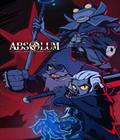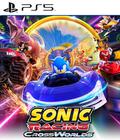Creating a new RPG is always a daunting task when you consider the average game length as well as the personalities of the fan base. The task is even more perilous when you have a new developer, but that is exactly what Electronic Arts has gotten itself into with Kingdoms of Amalur: Reckoning, the new RPG from 38 Studios and Big Huge Games. Years of development with input from people such as Todd McFarlane and R.A. Salvatore have yielded a rather large single-player experience that comes along a few months after The Elder Scrolls V: Skyrim and a month before Mass Effect 3. Luckily, the game does more than hold its own and is an excellent rookie effort.
When you start the game, you're treated to an opening akin to The Lord of the Rings. The lands of Amalur are changing as the factions of the fae are in conflict. As the dust settles, a fae named Gadflow has risen to power, and with his army, he plans to bring conflict to the world so that his chosen god may rise again. You were a soldier when you died, but after being subjected to some experiments in the Well of Souls, you're given a new life and a new destiny. With fate no longer guiding your path, you must discover how you died and how you'll affect a world where fate seems to govern all.
Once you get past the opening cut scene, you can create your character. You have the choice of either being a human or an elf, each with two different nationalities that affect your base stats and abilities. From there, you'll go into the character creation system, where you can change the basics such as facial structure, sex and skin tone. You'll then choose a religious affiliation which, like your nationality, further augments your stats.
The aesthetic character creation system feels rather basic. The only thing that can be changed is your face, and even then, there aren't too many options. Body type always remains the same, and you can't place tattoos or scars on your body. It's also limiting because you can't play as the game's other races: the fae and the gnomes.
Like most games, the first level acts as a tutorial, gradually teaching you the basics. You learn about movement and combat, but you also learn that you can fight with a secondary weapon without having to switch. You sneak to get the drop on the enemy and learn how to pick locks to open treasure chests. Magic is taught as a way to open doors and as an attack. Everything from the opening cut scene to the first boss fight teaches you about three main classes (mage, rogue and warrior) before letting you choose.
Get past this area, and the whole game opens up. You can explore just about every land mass on the map, and there aren't any artificial blockers to keep you focused on a set of story-based tasks. There's a variety of environments to run through, with towns that contain modern RPG staples like weapon- and armor-smithing, potion mixing, and shard crafting to augment your equipment. The lands feel open, but what's impressive is that loading is kept to a minimum during your travels. It only occurs when you go between buildings and new areas, and the load times are acceptable.
The openness of the lands is a reminder that Reckoning used to be an MMO, and the same can be said for the quests. You encounter plenty of story-related quests, which mostly involve fighting large bosses and meeting with important people for information. The more intriguing stuff is in the side-quests, which can be found within and outside of towns, making it possible to get a potential quest every few steps or so. Most quests are simple fetch quests or ask you to kill X amount of an enemy type, but there are a few that deviate from the norm. In one quest, skeletal remains need to be buried in certain spots; in another, you have to pretend someone died to free him from his previous gang's blood rituals.
There are quests that can be carried out for different factions, and they also range wildly, from getting rid of bandits to fleecing stolen goods. Completing these quests gives you more gold, experience, and armor and weapons. Combined with the poems and stories from the lore stones that litter the land, you gain a better sense of the world. It shows that your main quest, while important, isn't the only thing on people's minds.
The number of quests is rather massive, and that's reflected in the amount of time one can devote to the game. The quest lingers around the 35-hour mark, which should be enough to satisfy any fan, but the side-quests put the overall game length well into the triple digits — despite the individual quests not being too lengthy. None of the side-quests feel impossible to complete, but the sheer number of them means that one can't complain about paying more for less content.
There are two areas where the game breaks away from RPG conventions. The first is with your character's chosen class. Like your character, your class isn't immutable. As you level up, you can place one point into an overall skill and three points into any of the three skill trees usually reserved for a specific class. Doing so lets you break out of predefined class types so you can create hybrid classes and open up appropriate bonuses once you reach certain skill tree milestones. For example, you can stick with a warrior class that is adept at magic and creating complicated potions, or you could make a mage who is great at picking both locks and pockets. You can even create a rogue who handles a longsword and can create complicated weaponry. While there aren't enough points to max out every tree and skill, there are more than enough to create some interesting hybrid classes. With the option to pay gold to reset your point allocations, Reckoning almost encourages you to experiment.
Combat is the second area that deviates from the standard RPG model. Whereas most RPGs wrap combat in a turn-based menu system or have it be slow and methodical, combat tends to be quicker and more akin to a standard third-person action game. You can only arm yourself with two weapons at a time, but switching between them is instantaneous, so you can go between distanced and close combat fighting styles. Even if you stick with one weapon, leveling up opens up new combinations, such as juggling enemies in the air, which results in bonus experience for the fight. There's even a powered-up state where you can tag multiple enemies before performing a finishing move to kill them. It feels like someone married an action game to an RPG instead of the other way around.
Even though there is no multiplayer component, it still has an online pass that locks a set of optional side-quests. Unlike Batman: Arkham City, the locked content doesn't contribute to the overall story, so missing out on it doesn't mean that the plot becomes incomprehensible. There are plenty of side-quests to keep you busy, but you get the feeling that your game isn't as complete as it should be if you rented the game or purchased it used. There's the option for downloadable content, and as of this writing, there are a few weapon packs available for those who are willing to pay for these perks.
With the on-disc content being expansive and a battle system that works pretty well, there are a few things that will irk those who aren't used to some aspects of modern gaming. Freedom acts as a replacement for a defined morality system. No matter what choices you make, you're never locked away from a quest; however, it also means that the story becomes immutable, with only one possible ending but a variety of ways to reach said ending. Even if you decide to go with an elf instead of a human protagonist, only a few scenes are slightly changed, mostly involving dialogue that has no bearing on the story. Finally, for those who hate degradable weaponry and armor, be warned that the mechanic exists in Reckoning. While armor and weapon breaking doesn't mean that you'll lose the item forever, it does mean that you'll spend some time and coin getting someone to repair it — or buying repair kits to do it yourself.
If you need more proof that combat is an important component of the title, look no further than the controls, which have been configured for more battle options. All of the buttons are used to either bring up a shield or attacks with two weapon types, and the d-pad and radial wheel take care of potion use. When combined with face buttons, the R2 trigger unleashes magic spells. Despite the use of only one button for each attack type, there's a good combination system, so you can mix your basic attacks with magic to make up for the lack of quick and strong attacks. The only things missing are a jump button and a lock-on feature. While jump doesn't feel essential, missing lock-on feels odd since it's available for your bow — but nothing else. Even then, you can't select a target once you lock on an enemy, and while the game does a good job of determining who should receive the attack first, it would've been better to have the option.
Unlike most of the recent western RPGs, the graphics don't try to be realistic. Instead, the look is much more stylized and similar to what you'd see in Fable or World of Warcraft. Humans exude less of that animated style, some of the fae have larger ears or hair that stands upright all of the time, and the gnomes are stockier with large noses but have facial hair that seems more solid and thick. The creatures also take on these traits, and while some are standard RPG fare, some obvious Todd McFarlane influence makes them look grotesque in a good way. The environments have more pronounced colors, so the emerald sheen of fae and elven cities comes off brighter while the desert frontier lands come off with a yellow-orange haze indicative of a sunset. The animations are mostly smooth, and the particle effects are also representative of what gamers expect this late in the console cycle.
The graphics suffer from some very noticeable issues. The game has a habit of making more detailed textures pop up as you traverse a level, and the distance at which this occurs is closer than it is most games. The same goes for more detailed shadows on the ground, so it is common to see rocks go from muddy to chiseled or shadows turn from blobs to accurate representations of sunlight streaming through trees. It happens more often when you go through new areas, but it never disappears. The engine streaming that makes some fights choppy also hurts the game in cut scenes, where new architecture pops in as the scene plays. There's also the issue of some scenes choosing poor camera angles for some lines, forcing you to look behind a wall or through grass. Even then, both your hero and the NPC show no emotions on their faces. Their lines and inflections give you an idea of how dire a situation may be, but with their frozen looks and equally stiff body language, you won't be able to tell at all. This is all present after a day-one patch, so don't expect things to be fixed after the game asks you to upgrade to version 1.01.
Like the graphics, the sound is good but flawed. The music does a great job of encompassing all aspects of an epic fantasy movie, from the rousing score that plays during large-scale fights to the whimsical tunes that play in elven kingdoms. Most of the voice work is delivered well, and the game does a good job of reducing sound-alike characters by having them tackle incidental dialogue spoken in villages. Human enemies (and your own character) stay mostly silent during fights. The various accents (British for gnomes, Irish/Scottish for the fae, mostly American for humans and a mix of British and American for elves) help differentiate each race, but the accents are never thick enough that you'll need subtitles. Some of the incidental voices that play, especially in the opening level with the gnomes running away, play without any emotion, robbing some scenes of their emotional impact. Some effects play a second later than the on-screen actions, and it occurs often enough to be noticeable. This mostly occurs in new environments or when the game streams something from the disc.
Kingdoms of Amalur: Reckoning is an ambitious RPG that mostly delivers on its promise. The main quest is as lengthy as RPGs of yesteryear, while the amount and variety of quests bring an MMO flow to a single-player experience. The story is interesting, even if it lacks elements that people have come to expect, like a morality system. The graphics and sound are flawed but are more than acceptable this late in the console life cycle. For those looking for a deep action game or a more hands-on RPG experience, Reckoning fits the bill perfectly. For those recovering from — or still in the middle of — Skyrim, be warned that this game is just as deep.
Score: 8.0/10
More articles about Kingdoms of Amalur: Re-Reckoning











 Reckoning is an epic single-player game, and the first chapter of a vast new fantasy universe, that sends players on a fast-paced journey to unlock the mysteries of Amalur while redefining their hero's destiny and the fate of the world.
Reckoning is an epic single-player game, and the first chapter of a vast new fantasy universe, that sends players on a fast-paced journey to unlock the mysteries of Amalur while redefining their hero's destiny and the fate of the world.






















































